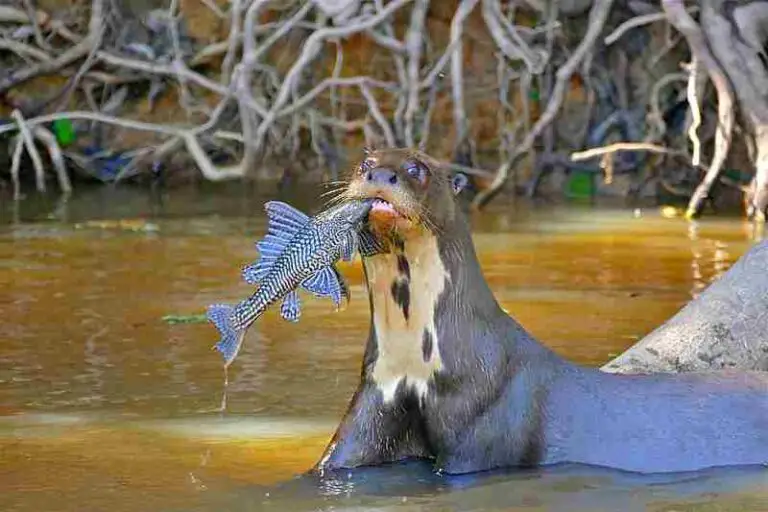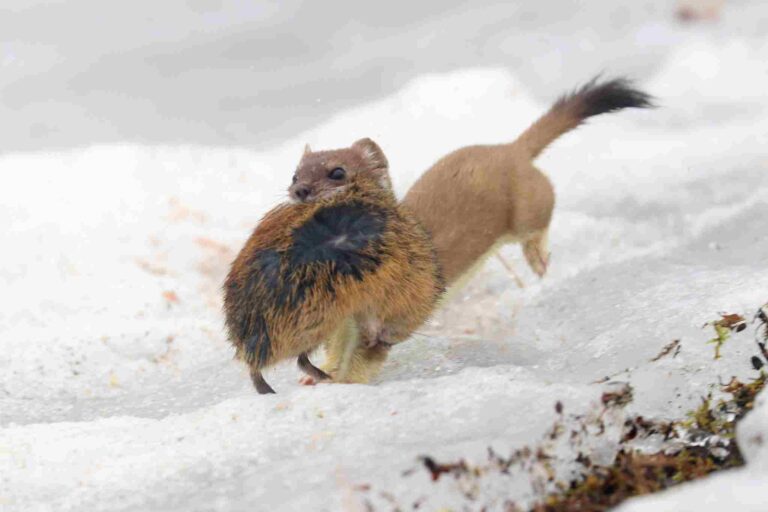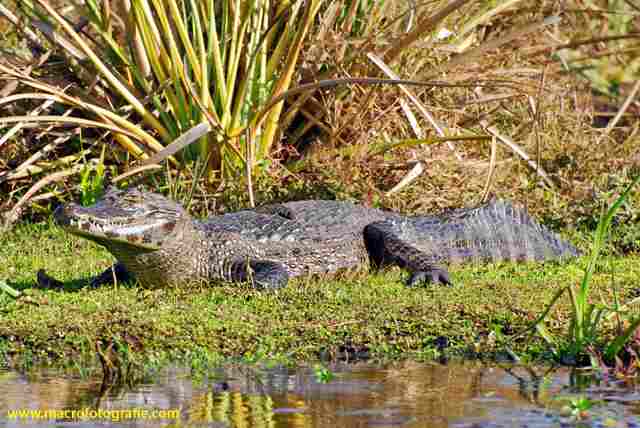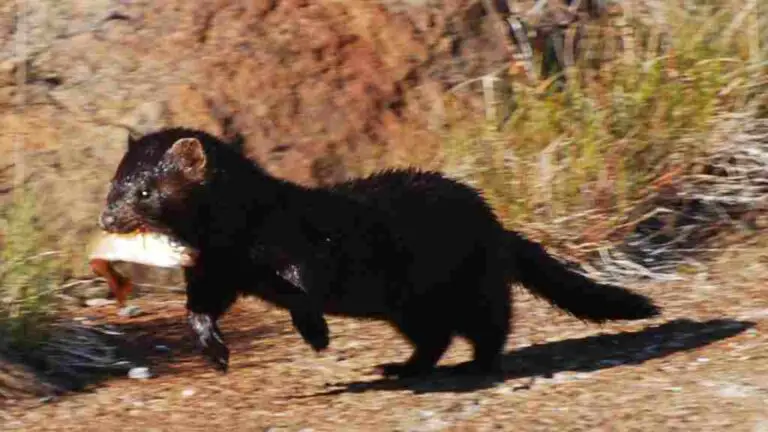Badger Vs Raccoon Size, Weight, Overall Comparison
Badgers and raccoons, members of the Mustelidae family, exhibit unique characteristics that define their roles within the animal kingdom. Badgers, known for their toughness and predatory nature, and raccoons, recognized for their adaptability, present an interesting scenario for a hypothetical confrontation. This analysis explores their taxonomy, appearance, size, weight, agility, aggressiveness, and predatory features to speculate on the potential outcome of a one-on-one clash between these two mustelids.
Badger vs Raccoon: Assessing the Likely Victor in a Confrontation
In a hypothetical one-on-one confrontation between a badger and a raccoon, the badger is likely to emerge victorious due to its lateral agility, heavier weight, greater speed, enhanced aggressiveness, and possession of formidable predatory features.
I). Weight and Lateral Agility:
– Badgers, generally heavier and possessing lateral agility, hold a significant advantage over raccoons. This combination of weight and agility allows badgers to effectively control the dynamics of a confrontation, making them more adaptable and strategic in a physical encounter.
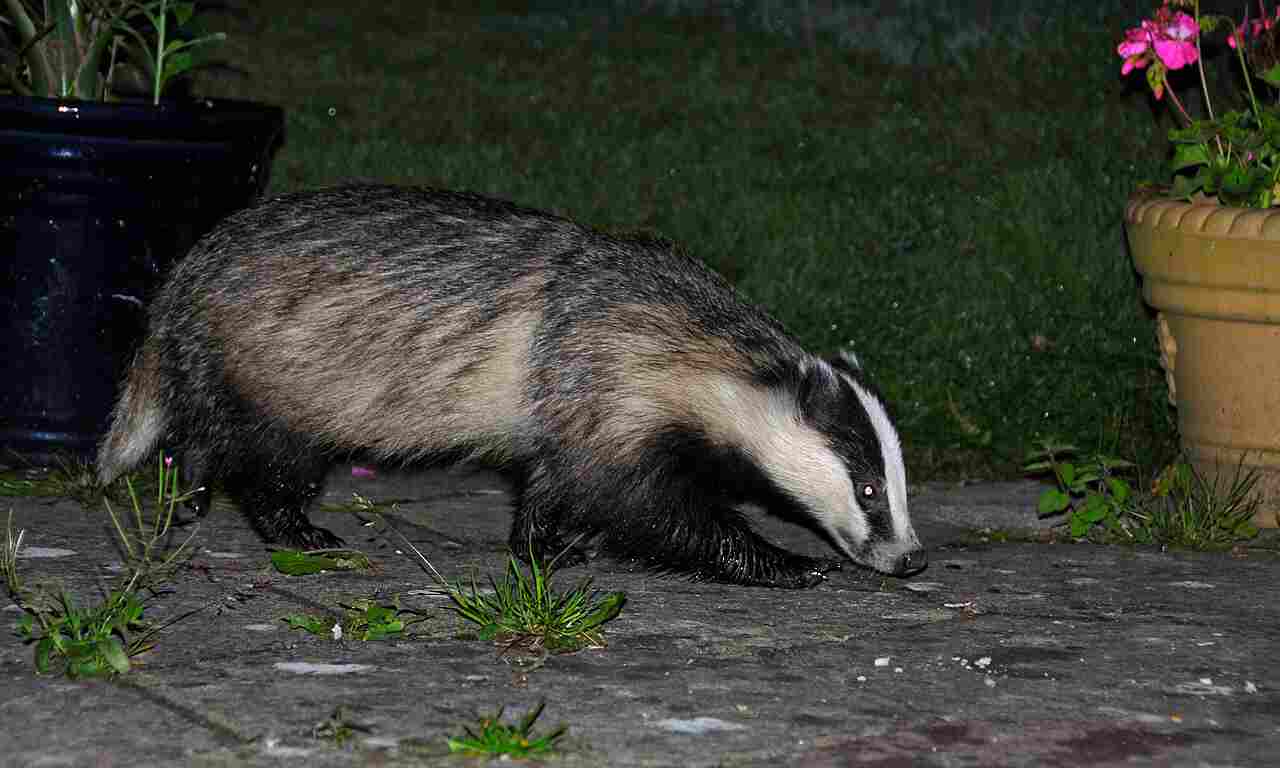
II). Speed Advantage:
– Badgers are known for their speed, which surpasses that of raccoons. This enhanced speed equips the badger with the ability to outmaneuver the raccoon, potentially gaining a decisive edge in determining the outcome of a one-on-one fight.
III). Aggressiveness:
– Badgers are inherently more aggressive, particularly when defending territory or engaging in confrontations. This heightened aggressiveness gives the badger an upper hand, allowing it to take control of the encounter and assert dominance over the raccoon.
IV). Formidable Predatory Features:
– Badgers possess formidable predatory features, adapted for hunting small mammals and birds. These features, such as sharp claws and a powerful jaw, give the badger additional tools to subdue the raccoon in a physical clash.
V). Overall Dominance:
– The combination of lateral agility, greater weight, enhanced speed, heightened aggressiveness, and formidable predatory features positions the badger as the likely victor in a confrontation with a raccoon. While raccoons are adaptable, the overall traits of the badger give it a decisive advantage in determining the outcome of a one-on-one fight.
*Details of Comparison
| Aspect | Badger | Raccoon |
| Taxonomy | – Order: Carnivora – Family: Mustelidae |
– Order: Carnivora – Family: Procyonidae
|
| Appearance | – Stout, muscular, wedge-shaped head |
– Medium-sized, robust, facial mask, ringed tail
|
| Size | – 20-30 inches in length (excluding tail) |
– 16-28 inches in length (excluding tail)
|
| Weight | – 9-39 pounds | – 11-26 pounds |
| Bite Force | – Strong bite force |
– Moderate bite force
|
| Physical Offensive Advantages | – Sharp claws, powerful bite |
– Dexterous front paws, versatile diet
|
| Physical Defensive Advantages | – Tough skin, aggressive behavior |
– Climbing abilities, vocalizations
|
| Speed | – Moderate running speed, short bursts |
– Moderate ground speed, agile climbing
|
| Agility | – Agile in confined spaces |
– Agile climber, manual dexterity
|
| Overall Physical Capacity | – Specialized for digging, hunting |
– Versatile physique, adaptable behaviors
|
| Habitat Preference(s) | – Open grasslands, woodlands, meadows |
– Adaptable to various habitats
|
| Tracks | – Broad stance, claw marks |
– Hand-like tracks, claw marks
|
| Lifespan | – 3-14 years in the wild |
– 2-3 years on average in the wild
|
| Mode of Feeding | – Carnivorous | – Omnivorous |
| Social Behavior | – Typically solitary, some family groups |
– Generally solitary, may be social
|
| Mode of Reproduction | – Gives birth in burrows |
– Gives birth in dens or tree cavities
|
| Parental Behavior | – Female is primary caregiver |
– Female is primary caregiver
|
| Proximity to Human Areas | – Near human-inhabited areas |
– Highly adaptable to urban environments
|
| Behavior Toward Humans | – Generally avoids, can be aggressive |
– Opportunistic, may approach for food
|
| Danger Posed to Humans | – Minimal under normal circumstances |
– Minimal under normal circumstances
|
| Associated Precautions | – Observe from a distance, avoid confrontation |
– Secure food sources, avoid direct contact
|
| Conservation Status | – Varies among species, some may face threats |
– Generally “Least Concern” globally
|
| Conclusion | – Both carnivores with unique roles in ecosystems |
– Differences in diet, adaptability, and behavior
|
1. Taxonomy:
Badger:
Kingdom: Animalia
Phylum: Chordata
Subphylum: Vertebrata
Class: Mammalia
Order: Carnivora
Family: Mustelidae
Genus: Meles (European badger), Taxidea (American badger), Arctonyx (Asian badger)
Species: Various species within the respective genera
Raccoon:
Kingdom: Animalia
Phylum: Chordata
Subphylum: Vertebrata
Class: Mammalia
Order: Carnivora
Family: Procyonidae
Genus: Procyon
Species: Various species within the genus, such as Procyon lotor (common raccoon)
2. Appearance:
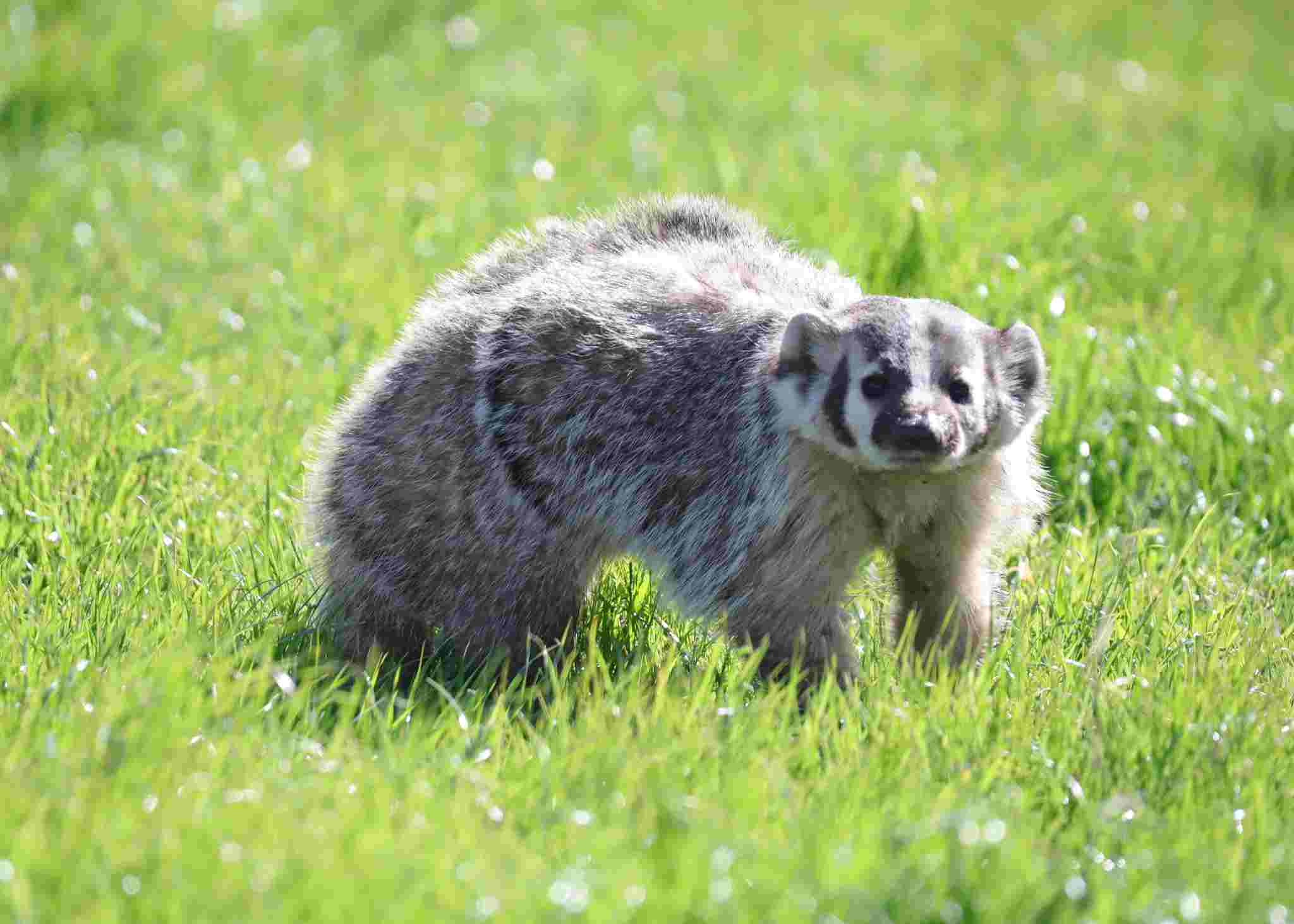
Badger:
Stout and muscular body with a distinctive wedge-shaped head.
Short legs, powerful claws for digging.
Coat color varies among species, commonly shades of gray, brown, or black with a white face marking.
Raccoon:
Medium-sized, robust body with a pointed snout.
Recognizable facial mask and ringed tail.
Grayish fur with a mix of lighter and darker patches.
Comparison: Badgers have a more compact build, while raccoons have a distinctive mask and ringed tail, making them visually different.
Ecological Implications: The appearance of these species influences their roles in ecosystems, with badgers often associated with digging and burrow creation, while raccoons use their dexterous front paws for manipulating objects.
3. Size:
Badger:
Varies by species, ranging from 20 to 30 inches (50 to 76 cm) in length (excluding tail).
Weight typically between 9 to 39 pounds (4 to 18 kg).
Raccoon:
Adult length ranges from 16 to 28 inches (41 to 71 cm), excluding the tail.
Weight commonly between 11 to 26 pounds (5 to 12 kg).
Comparison: Badgers are generally larger in both length and weight compared to raccoons.
Ecological Implications: Size can affect the niche each species occupies within an ecosystem, influencing prey selection and competition with other carnivores.
4. Weight:
Badger:
Weight ranges between 9 to 39 pounds (4 to 18 kg) depending on the species.
Raccoon:
Weighs between 11 to 26 pounds (5 to 12 kg) on average.
Comparison: Badgers are typically heavier than raccoons.
Ecological Implications: Weight can influence energy requirements, territory size, and overall impact on prey populations.
5. Bite Force:
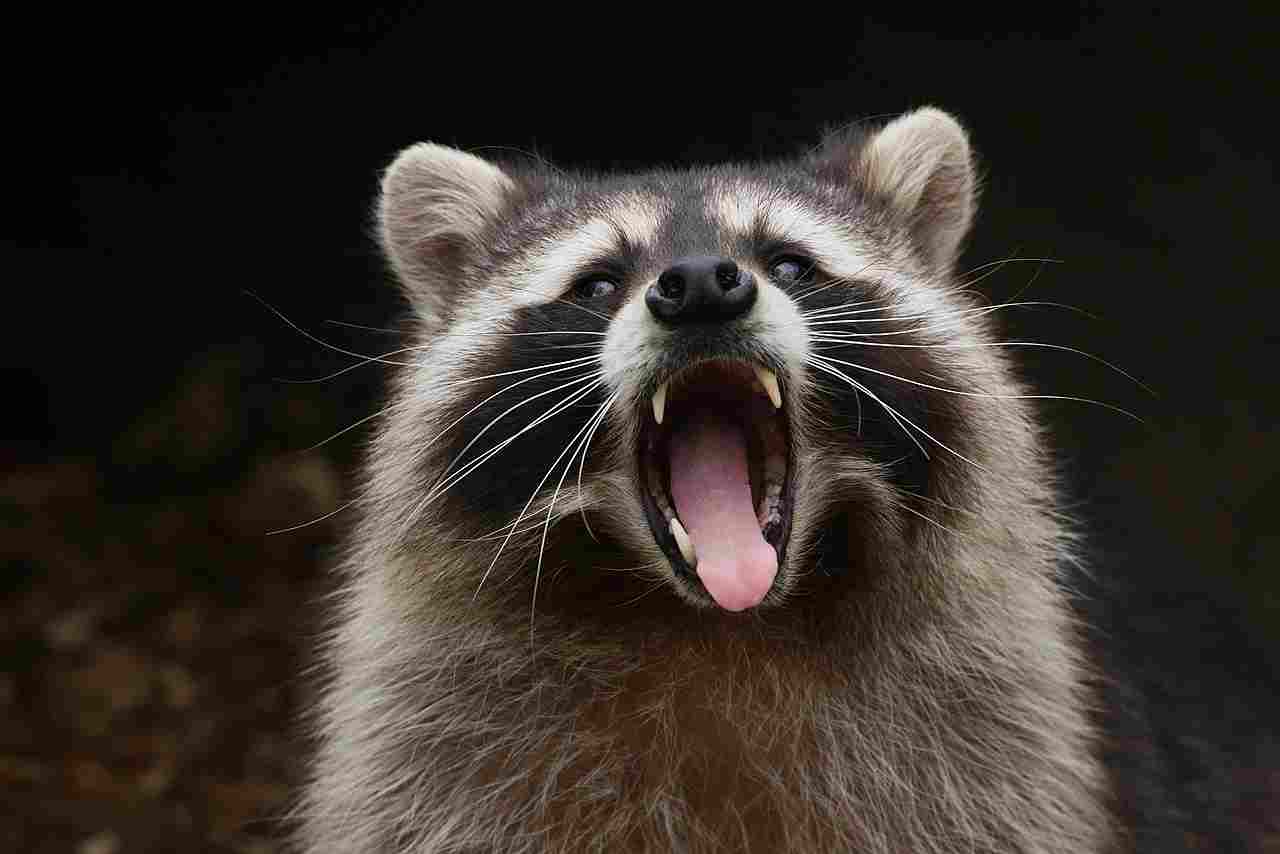
Badger:
Strong jaw muscles and a powerful bite force used for capturing and subduing prey.
Raccoon:
Moderately strong bite force, adapted for crushing shells and handling a varied diet.
Comparison: Badgers generally possess a stronger bite force, which is crucial for their carnivorous hunting habits.
Ecological Implications: Bite force influences feeding behavior, allowing badgers to tackle a wider range of prey, including those with protective shells or tough exoskeletons.
6. Physical Offensive Advantages:
Badger:
Sharp claws and a powerful bite make badgers formidable predators.
Digging abilities aid in unearthing prey.
Raccoon:
Dexterous front paws enable raccoons to manipulate objects and open containers.
Sharp teeth for grasping and consuming a diverse diet.
Comparison: Badgers rely more on physical strength for offense, while raccoons exhibit a higher degree of manual dexterity.
Ecological Implications: These offensive advantages contribute to the unique hunting and foraging strategies of each species, influencing their impact on local ecosystems.
7. Physical Defensive Advantages:
Badger:
Tough, loose skin provides protection against bites from prey or predators.
Sharp claws and aggressive behavior act as defensive mechanisms.
Raccoon:
Agile climbing abilities allow raccoons to escape from ground predators.
Use of vocalizations and posturing as defensive tactics.
Comparison: Badgers rely on aggression and physical attributes for defense, while raccoons use a combination of agility and vocal communication.
Ecological Implications: Defensive adaptations shape the interactions between these species and their environment, affecting predator-prey dynamics and overall ecosystem balance.
8. Speed:
Badger:
Moderate running speed but excels in short bursts.
Raccoon:
Agile climbers with good climbing speed; moderate ground speed.
Comparison: Raccoons exhibit better climbing speed, whereas badgers are more adapted to short sprints.
Ecological Implications: Differences in speed contribute to the hunting and evasion strategies of each species, influencing their interactions with other animals in the ecosystem.
9. Agility:
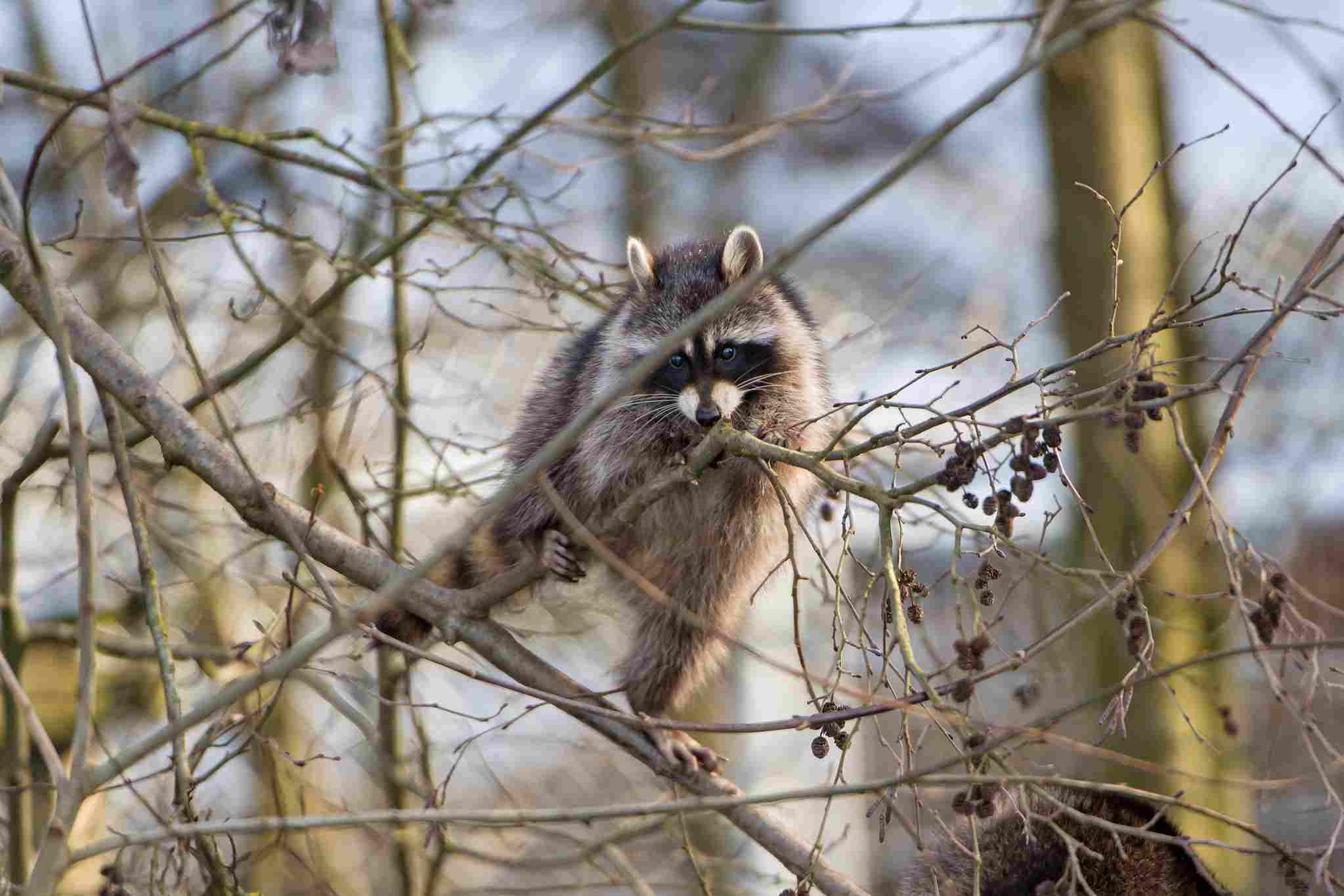
Badger:
Agile and capable of quick movements, especially in confined spaces.
Raccoon:
Exceptional climbing ability, showcasing agility in both trees and urban structures.
Comparison: Raccoons are more agile climbers, while badgers demonstrate agility in burrows and confined spaces.
Ecological Implications: Agility influences their ability to access different types of habitats, escape predators, and exploit diverse food resources.
10. Overall Physical Capacity:
Badger:
Strong and muscular, well-adapted for digging and hunting.
Specialized physical features for burrow excavation.
Raccoon:
Versatile physique with adaptations for climbing, swimming, and exploring urban environments.
Dexterous front paws contribute to manual tasks.
Comparison: Badgers have specialized physical features for digging, while raccoons possess a more versatile physique adapted for various environments.
Ecological Implications: Their overall physical capacity shapes their roles in ecosystems, affecting their interactions with other species and their ability to exploit different resources.
11. Habitat Preference(s):
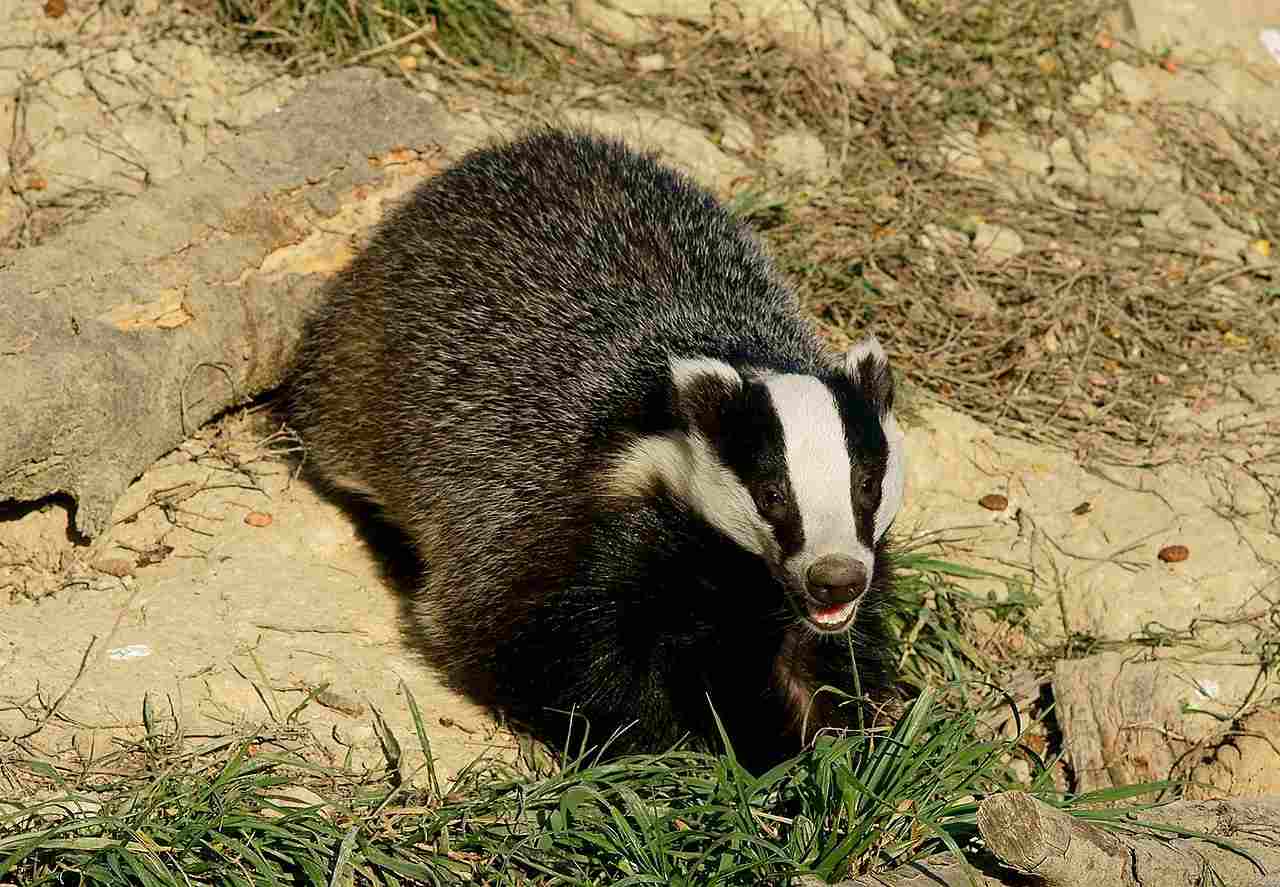
Badger:
Prefers open grasslands, woodlands, and meadows with access to suitable burrow sites.
Raccoon:
Highly adaptable, found in various habitats including forests, urban areas, and wetlands.
Comparison: Badgers typically favor more open environments, while raccoons demonstrate adaptability to a broader range of habitats.
Ecological Implications: Habitat preferences influence the distribution and potential impact of each species on local ecosystems.
12. Tracks:
Badger:
Distinctive track patterns with claw marks and a broad stance.
Raccoon:
Hand-like tracks with five toes and clear claw marks; often show in mud or soft soil.
Comparison: Badger tracks are more compact and show a broad stance, while raccoon tracks resemble human hands.
Ecological Implications: Tracking enables researchers to study the distribution and behavior of these species in the wild.
13. Lifespan:
Badger:
Typically lives 3 to 14 years in the wild, depending on species and environmental factors.
Raccoon:
Wild raccoons have a lifespan of 2 to 3 years on average, but can live longer in captivity.
Comparison: Badgers generally have a longer lifespan than raccoons in the wild.
Ecological Implications: Lifespan impacts population dynamics, reproduction rates, and overall species persistence in ecosystems.
14. Mode of Feeding:
Badger:
Carnivorous diet, primarily feeding on small mammals, insects, and invertebrates.
Uses keen sense of smell and strong digging abilities to locate prey.
Raccoon:
Omnivorous, consuming a varied diet including fruits, nuts, insects, small mammals, and even human food.
Adaptable foraging behavior, often seen manipulating objects with front paws.
Comparison: Badgers are primarily carnivorous, while raccoons have a more diverse, omnivorous diet.
Ecological Implications: Differences in feeding behavior contribute to their ecological roles, affecting prey populations and plant communities.
15. Social Behavior:
Badger:
Typically solitary, but some species may form loose family groups.
Territories defended aggressively, especially during the breeding season.
Raccoon:
Generally solitary, but can be social, especially during mating season.
Often tolerate the presence of other raccoons in overlapping territories.
Comparison: Both species exhibit solitary tendencies, but raccoons may display more social behaviors.
Ecological Implications: Social behavior affects population dynamics, resource competition, and interactions with other species.
16. Mode of Reproduction:
Badger:
Typically gives birth to a litter of cubs in a burrow.
Gestation period varies by species but generally lasts around 6 weeks.
Raccoon:
Gives birth to a litter of kits in a den or tree cavity.
Gestation period lasts approximately 63 days.
Comparison: Both species give birth to litters, but badgers often use burrows, while raccoons may use dens or tree cavities.
Ecological Implications: Reproductive strategies impact population dynamics and the availability of suitable nesting sites in ecosystems.
17. Parental Behavior:
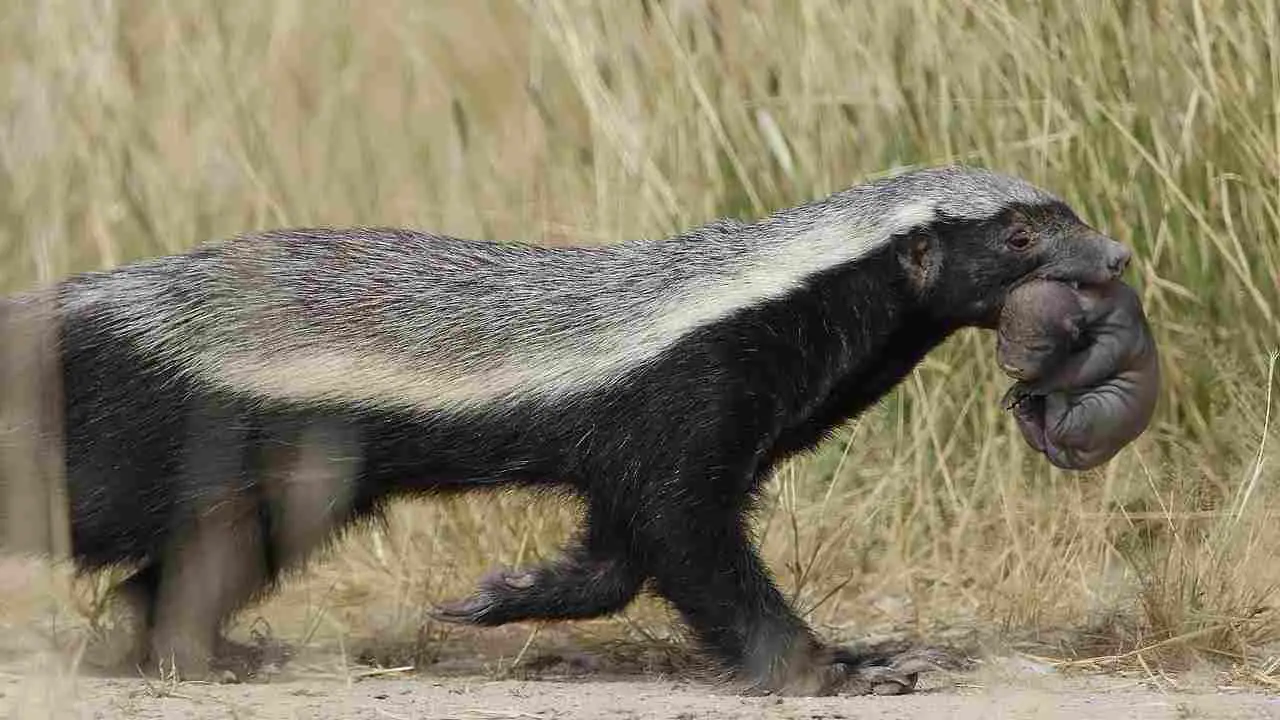
Badger:
Female badgers are the primary caregivers, raising and protecting the cubs.
Young badgers stay with the mother until they are independent.
Raccoon:
Female raccoons are also primary caregivers, protecting and nurturing the kits.
Young raccoons stay with the mother for several months before becoming independent.
Comparison: Both species exhibit maternal care, with females playing a crucial role in raising their young.
Ecological Implications: Parental behavior influences the survival and development of offspring, impacting population dynamics in ecosystems.
18. Proximity to Human-Inhabited Areas:
Badger:
Can be found near human-inhabited areas, especially in rural landscapes.
May dig burrows in fields or near human structures.
Raccoon:
Highly adaptable to urban environments, often seen scavenging for food in residential areas.
Known to exploit human food sources.
Comparison: Raccoons exhibit a higher degree of adaptability to urban environments compared to badgers.
Ecological Implications: Proximity to human-inhabited areas can lead to interactions, both positive and negative, influencing human-wildlife relationships and potential conflicts.
19. Behavior Toward Humans:
Badger:
Generally avoids humans but may display aggression if cornered or threatened.
Defensive behavior includes hissing, growling, and biting.
Raccoon:
Opportunistic and may approach humans for food, especially in urban areas.
Can become accustomed to human presence, leading to potential conflicts.
Comparison: Badgers are more likely to avoid humans, while raccoons can be opportunistic around human settlements.
Ecological Implications: Species’ behavior toward humans can impact human perceptions and attitudes, affecting conservation efforts and wildlife management.
20. Danger Posed to Humans:
Badger:
Generally not considered dangerous to humans unless cornered or provoked.
Defensive actions may lead to bites or scratches.
Raccoon:
Typically not aggressive, but can transmit diseases like rabies.
May become aggressive if threatened, especially when protecting young.
Comparison: Both species pose minimal danger to humans under normal circumstances.
Ecological Implications: Understanding the potential risks associated with these species helps in developing appropriate management strategies to mitigate conflicts.
21. Associated Precautions:
Badger:
Observing from a distance is advisable.
Avoiding confrontation and giving the animal space is key.
Raccoon:
Securing garbage and food sources to prevent attracting raccoons.
Avoiding direct contact and not feeding them.
Comparison: Similar precautions, emphasizing the importance of minimizing human-wildlife conflicts.
Ecological Implications: Responsible human behavior helps in maintaining a harmonious coexistence between wildlife and human populations, preserving ecological integrity.
22. Conservation Status:

Badger:
Conservation status varies among species.
Some species, like the European badger (Meles meles), are listed as “Least Concern,” while others, like the American badger (Taxidea taxus), may face threats in specific regions.
Raccoon:
Generally, the common raccoon (Procyon lotor) is listed as of “Least Concern” on a global scale.
Local populations may face challenges, particularly in urban areas.
Comparison: Both badgers and raccoons, as broad groups, are not globally considered endangered, but specific species or local populations may be at risk.
Ecological Implications: Monitoring the conservation status of these species helps in understanding the health of ecosystems and the potential impact of human activities.
Summary of Comparison
Taxonomy:
Badger: Order Carnivora, Family Mustelidae.
Raccoon: Order Carnivora, Family Procyonidae.
Appearance:
Badger: Stout, muscular, wedge-shaped head, various coat colors.
Raccoon: Medium-sized, robust, facial mask, ringed tail, grayish fur.
Size:
Badger: 20-30 inches in length, 9-39 pounds.
Raccoon: 16-28 inches in length, 11-26 pounds.
Weight:
Badger: Heavier, 9-39 pounds.
Raccoon: Lighter, 11-26 pounds.
Bite Force:
Badger: Strong bite force.
Raccoon: Moderate bite force.
Physical Offensive Advantages:
Badger: Sharp claws, powerful bite, digging abilities.
Raccoon: Dexterous front paws, versatile diet.
Physical Defensive Advantages:
Badger: Tough skin, aggressive behavior.
Raccoon: Climbing abilities, vocalizations.
Speed:
Badger: Moderate running speed, short bursts.
Raccoon: Moderate ground speed, agile climbing.
Agility:
Badger: Agile in confined spaces.
Raccoon: Agile climber, manual dexterity.
Overall Physical Capacity:
Badger: Specialized for digging, hunting.
Raccoon: Versatile physique, adaptable behaviors.
Habitat Preference(s):
Badger: Open grasslands, woodlands, meadows.
Raccoon: Adaptable to various habitats.
Tracks:
Badger: Broad stance, claw marks.
Raccoon: Hand-like tracks, claw marks.
Lifespan:
Badger: 3-14 years in the wild.
Raccoon: 2-3 years on average in the wild.
Mode of Feeding:
Badger: Carnivorous.
Raccoon: Omnivorous.
Social Behavior:
Badger: Typically solitary, some family groups.
Raccoon: Generally solitary, may be social.
Mode of Reproduction:
Badger: Gives birth in burrows.
Raccoon: Gives birth in dens or tree cavities.
Parental Behavior:
Badger: Female is primary caregiver.
Raccoon: Female is primary caregiver.
Proximity to Human Areas:
Badger: Near human-inhabited areas.
Raccoon: Highly adaptable to urban environments.
Behavior Toward Humans:
Badger: Generally avoids, can be aggressive.
Raccoon: Opportunistic, may approach for food.
Danger Posed to Humans:
Both species pose minimal danger under normal circumstances.
Associated Precautions:
Observe from a distance, avoid confrontation (badger).
Secure food sources, avoid direct contact (raccoon).
Conservation Status:
Badger: Varies among species, some may face threats.
Raccoon: Generally “Least Concern” globally.
Conclusion:
I). Similarities:
Both badgers and raccoons belong to the order Carnivora and share similarities in their anatomy and behavior.
They exhibit adaptability to different environments and play important roles in their respective ecosystems.
II). Differences:
While both are carnivores, badgers primarily have a carnivorous diet, whereas raccoons are omnivorous.
Badgers are generally larger and have a more compact build compared to raccoons.
Raccoons display higher adaptability to urban environments and are more likely to approach humans for food.

